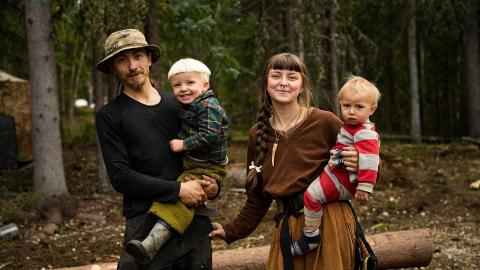American Civil War
The country is in flame…God does not intend to give us peace again until the last shackle is stricken from the wrist of the black man.
Montgomery Meigs, Quartermaster General of the Union
In the bloodiest period of American history, historian Simon Schama highlights the career of Montgomery Meigs, the man who made sure Union troops had shoes and socks, amongst other things. This is because the American Civil War was a battle of logistics, as much of beliefs. Victory was as much won by his ability to out-supply his troops with uniforms, food and weapons, as by the honouring of the Declaration of Independence that 'all men are created equal'. But, in the beginning, as President Abraham Lincoln made clear, the war was first about preserving the Union, and not liberating slaves.
THE SECOND AMERICAN REVOLUTION?
Lincoln's presidential campaign was not for the abolition of slavery, but for stopping its expansion. (For, amongst other things, slavery depreciated the wages of working whites). But the fact that the US President even considered dictating such limitations was enough for seven Southern states to announce their secession and departure from the Union. When one of these, South Carolina, took Fort Sumter, which was in their territory, but manned by US troops, Lincoln responded and effectively started the American Civil War.
THE FIRST MODERN WAR
In April 1861 President Lincoln announces a blockade of all Southern ports and requests a volunteer force of 75,000 to restore federal authority. Thousands sign up but the states of Virginia, Arkansas, Tennessee and North Carolina leave the Union and join the Confederacy.
Few great nations have been less ready in any way for war than were the Americans, North and South, in 1861
Hugh Brogan
Lincoln starts studying books on tactics to ready himself for his new role as Commander-in-Chief. General Scott creates 'the Anaconda', a plan to attack the Confederates from all sides and squeeze them into submission. But Scott's too old and fat for field command, so Commander Irvin McDowell fights the first battle of Bull Run. Expecting victory, people from Washington come to picnic near the battle. They too join the panicky retreat as the Confederates roll forward. Washington, and the war, is theirs for the taking. But, as with many Civil War battles, the victor fails to finish the job.
In the spring of 1862 the Confederates launch the iron-clad warship, the Virginia, to break the naval blockade. In terms of military history, it is momentous, marking the end of wooden ship warfare. For the Confederates, however, the attempt fails. Union Brigadier-General Ulysses Grant secures victories and losses around Mississippi and the industrial scale of losses, 23,000 dead in total, are characteristic of the campaign. In the summer, Confederate General Robert E. Lee wins the first of many battles against the too cautious General George McClellan. Lee secures again his state of Virginia. In August, despite being heavily outnumbered, he wins the second battle of Bull Run and again, it's a crushing defeat for the Union.
McClellan and Lee meet once more on 17 September at Antietam Creek in Maryland. It is the bloodiest day of the war with 12,000 Union dead. But Lee's forces suffer equally and being less numerous, McClellan has the opportunity to crush his opponent in retreat. He doesn't. So Lincoln replaces him.
Did you know?
The Pennsylvanian militia signed up with Lincoln for 90 days and as the first Union battle of Bull Run took place at the end of this commitment, they simply left just before the battle. Such factors helped the Confederates inflict a humiliating defeat on the Union. , General Lee, still a symbol of the South to this day, actually freed his slaves before taking up command of the Confederate forces.
















